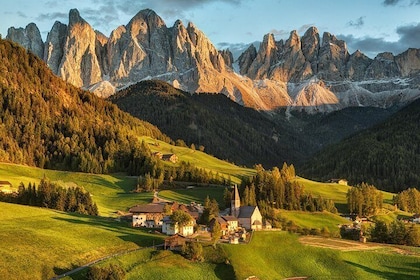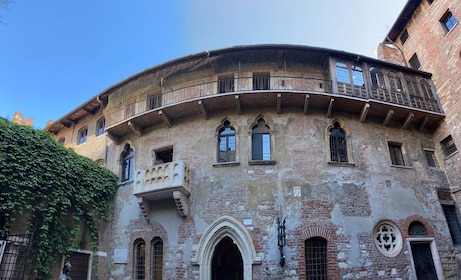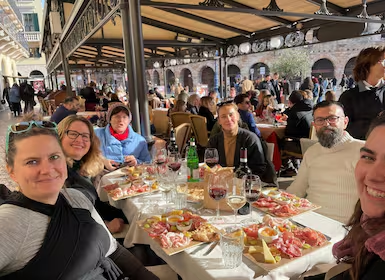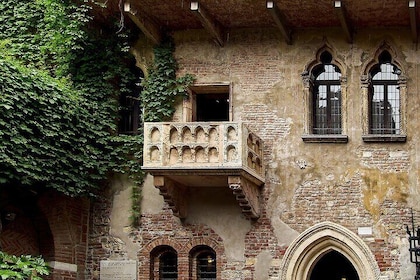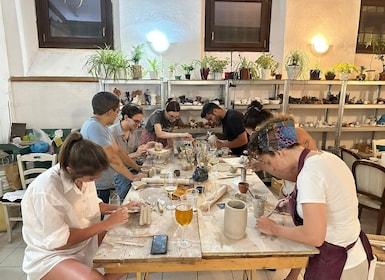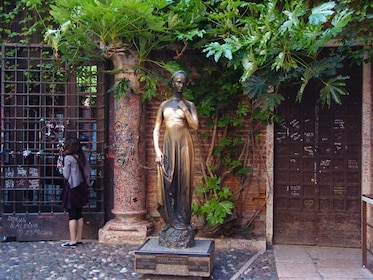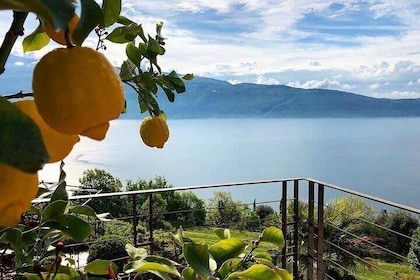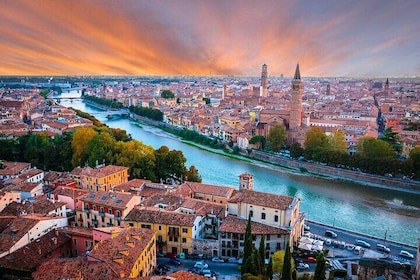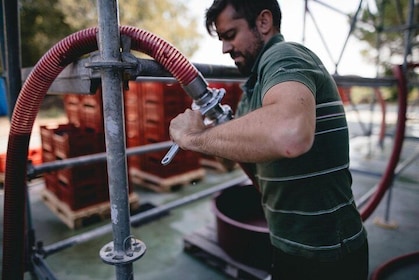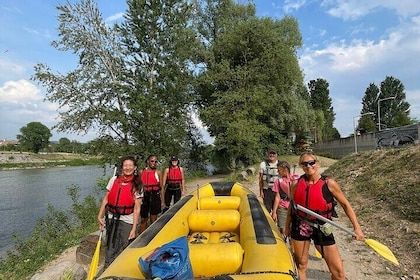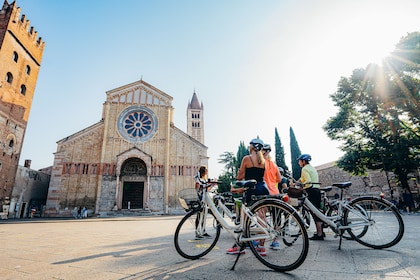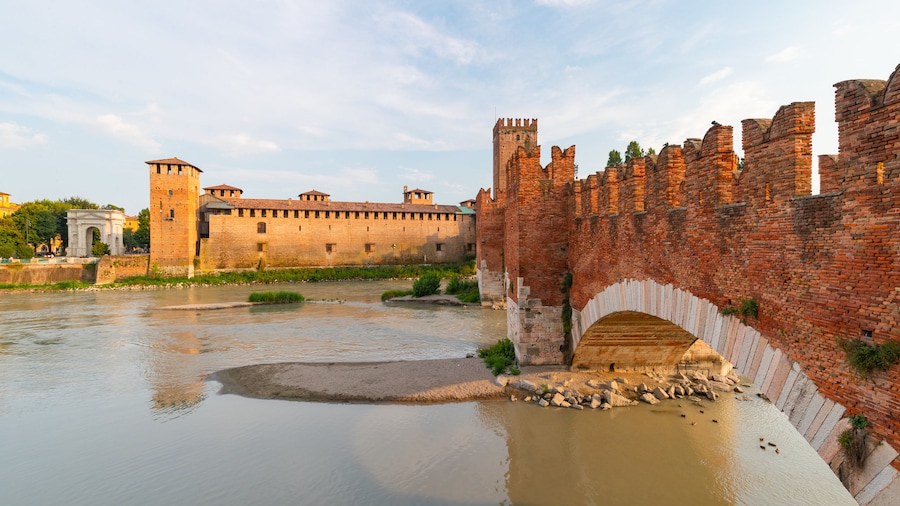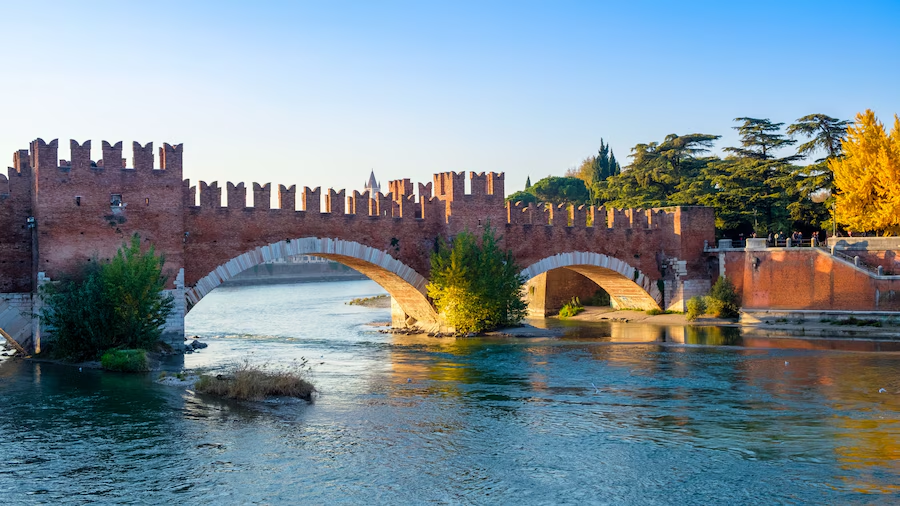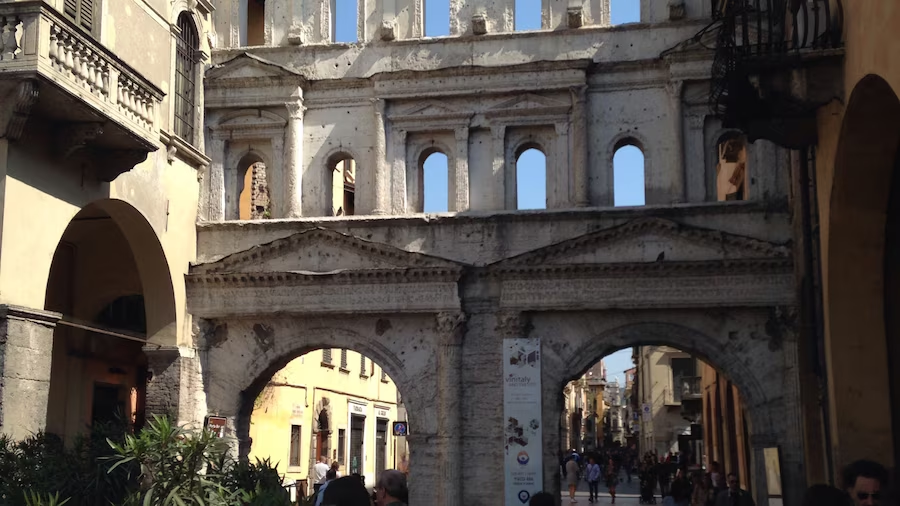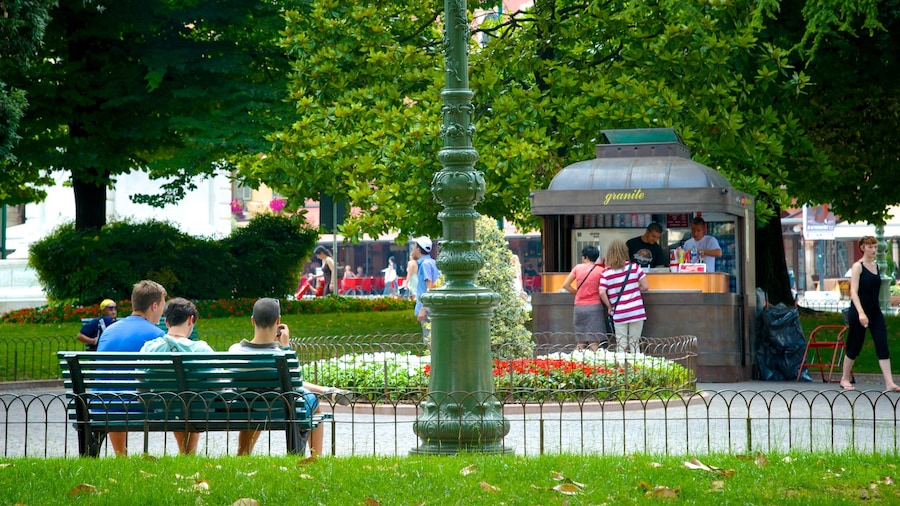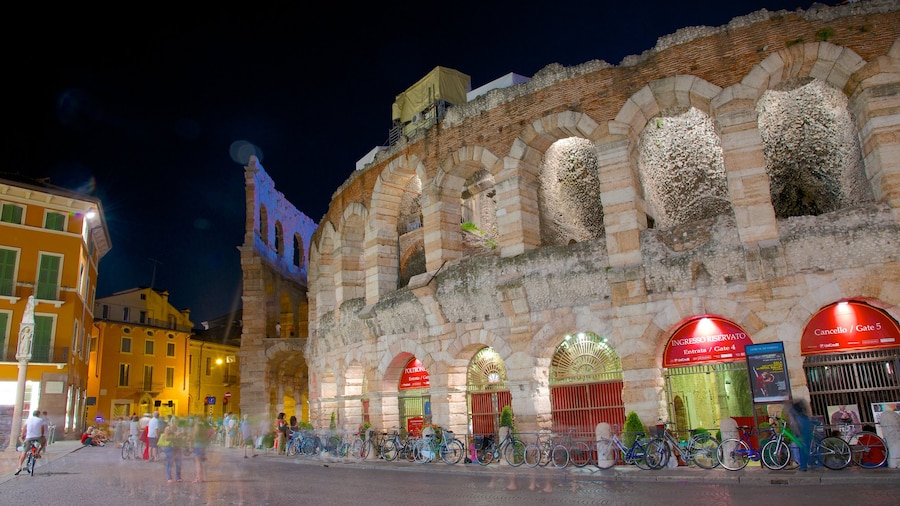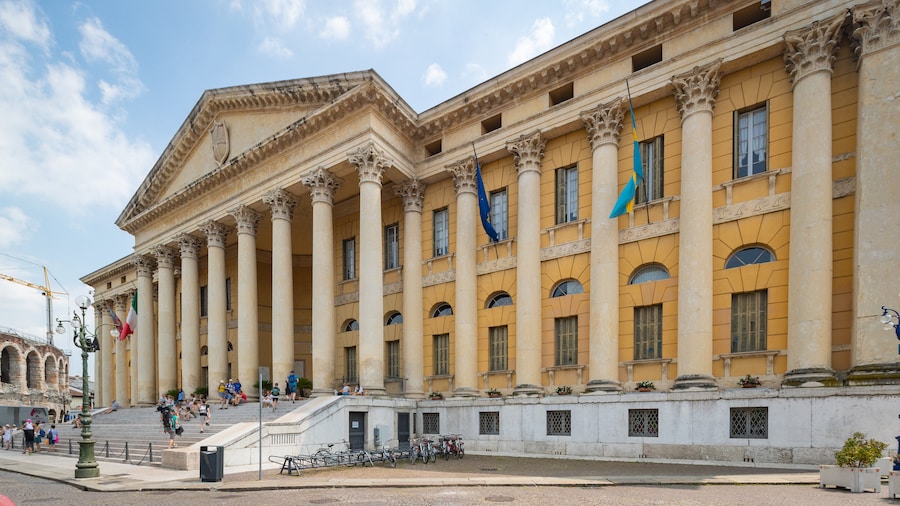This iconic medieval bridge connects the Città Antica with the northern banks of the Adige River and served as an escape route for the Lords of Verona.
Ponte Scaligero (Scaligero Bridge or Castelvecchio Bridge) is one of the finest examples of medieval-style architecture in Verona. Erected on the orders of Veronese lord Cangrande II della Scala in 1354, at the same time as Castelvecchio fortress, Ponte Scaligero stood unharmed for almost 500 years. German troops destroyed the bridge when they fled the city during World War II. Today’s bridge dates to 1951 and is a faithful reconstruction of the original built using recovered materials.
Looking at the bridge from its southern end, you’ll notice that it slopes gradually down to the opposite side of the river. This was a deliberate design element to give Cangrande II della Scala, who lived at the fortress, a quick getaway toward the Tyrol countryside. Measuring just 394 feet (120 meters) in length, it only takes a minute to cross the bridge on foot.
The combination of white marble and red brick is typical of the Verona landmarks commissioned by the noble Scaliger family in the Middle Ages. Pay attention to the asymmetrical design, the turreted walls and M-shaped merlons, which are the solid, pointed parts of the bridge. There are three arches, the largest of which is 157 feet (48 meters) wide and at the time of completion was among the largest bridge arches in the world. Between the arches are supporting pentagonal towers.
For excellent views of the bridge, position yourself on the battlements of Castelvecchio or from a riverfront path along the northern banks of the Adige. Climb the steps to the top of the bridge’s pentagonal towers, gaze along the river and look across the rooftops of the Città Antica. Floodlights elegantly illuminate the bridge after sunset.
Ponte Scaligero is located in the southwestern corner of the Città Antica and can be reached on foot from Verona Arena and Piazza dei Signori. Combine your time here with a visit to Castelvecchio Museum, located in the restored rooms of the castle.





